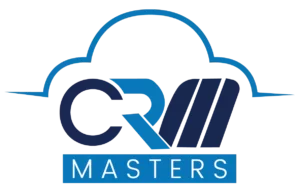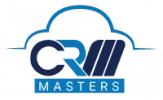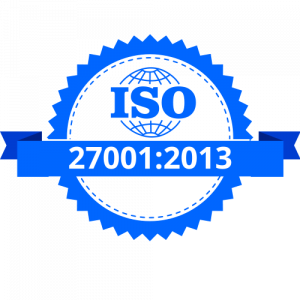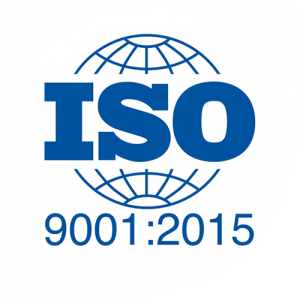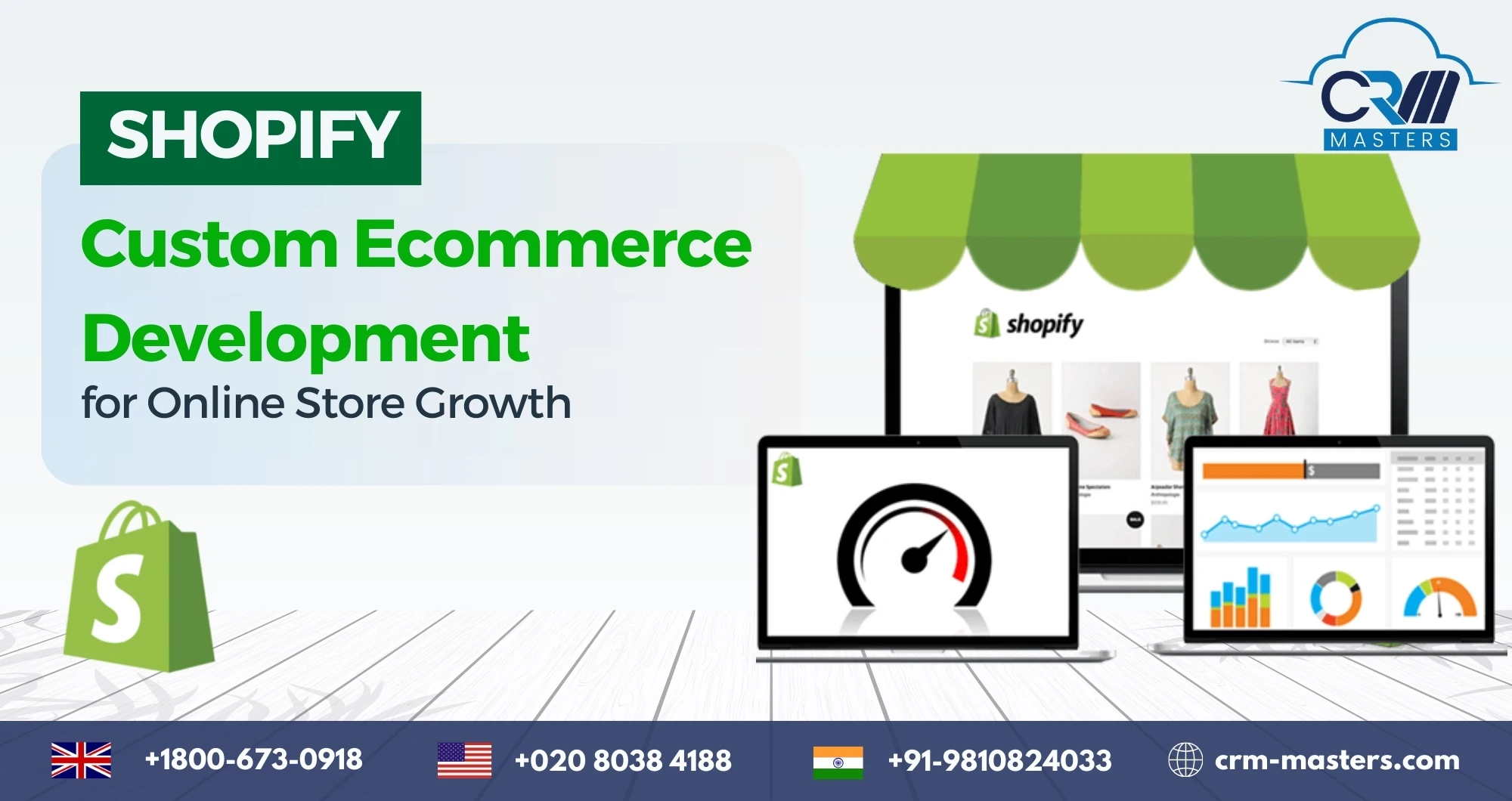
Custom Ecommerce Development for Online Store Growth
Launching an ecommerce business is easier than ever. With just a few clicks, you can set up a store using pre-built templates and start selling online. But what happens when those ready-made solutions no longer meet your growing needs? Custom Ecommerce Development becomes important here.
Whether you’re a fast-growing brand looking for flexibility or a business aiming for a unique digital identity, custom ecommerce development offers the tools and freedom to build exactly what you envision.
Let’s break down what custom ecommerce development means, why it matters, and how to approach it strategically.
What Is Custom Ecommerce Development?
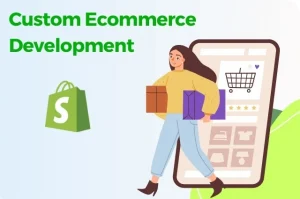
The process of creating an online store that is precisely suited to your company’s requirements, branding objectives, and consumer expectations is known as custom ecommerce development.
Instead of using a standard platform with limited customization options, you get to create a customised online experience. This involves both frontend development (what the customer sees) and backend development (how the system works).
You can either work with a Shopify Development Company (recommended option) or build it in-house if you have a technical team.
Why Businesses Choose Custom Ecommerce Development
1. Full Control and Flexibility
With a custom build, you’re not tied to the limitations of any one platform. Want to change the layout, tweak the checkout process, or build an exclusive feature? You can. Every element of your website is adjustable to match your vision and strategy.
2. Scalability
As your business grows, so do your ecommerce needs. A custom solution gives you the ability to scale, whether it’s handling more website traffic, adding new features, or integrating with advanced tools.
3. Seamless Integration
Most ecommerce businesses rely on multiple tools—ERPs, CRMs, marketing platforms, payment gateways, logistics partners, etc. A custom solution ensures smooth integration between all these systems, offering better efficiency and automation.
4. Unique Brand Identity
A cookie-cutter website won’t set you apart in a competitive market. Custom ecommerce development allows you to deliver a unique brand experience through unique designs, animations, and interactions that reflect your business personality.
5. Long-term Cost Efficiency
Yes, the initial investment is higher than using a template. But in the long run, you save on licensing fees and avoid expensive workarounds that come with trying to make off-the-shelf platforms do something they weren’t built for.
How to Plan Your Custom Ecommerce Website

1. Understand Your Business Needs
Before jumping into development, define what your ecommerce store must achieve.
Ask yourself:
- How many products will you sell?
- What kind of user experience do you want to create?
- Do you need multi-language or multi-currency support?
- Will you offer subscriptions, bundles, or custom pricing models?
Mapping this out early helps guide your entire development process.
2. Analyze Customer Expectations
Think about your target audience. Are they tech-savvy? Mobile-first? Expect fast checkout and real-time chat support? Knowing this will influence how you build and design the website.
3. User-Centric Interface (UI/UX) Design
Design plays a huge role in ecommerce success. Your online store must be visually appealing, easy to navigate, and consistent with your brand identity.
Best practices include:
- Clean layouts and intuitive navigation
- Mobile responsiveness (your site should work seamlessly on all devices)
- Accessible design (colour contrast, readable fonts, keyboard navigation)
- Fast load times (compressed images and optimized code)
You can prototype and test your designs before building to collect real user feedback and fine-tune the experience.
4. Smart Functionality
Custom development gives you the ability to shape your site’s functionality exactly how you need. Some essential features include:
- Advanced Registration Options: Allow users to sign up via email, social accounts, or phone numbers, and add two-factor authentication for security.
- Dynamic Product Pages: Show detailed product descriptions, specs, images, videos, customer reviews, and real-time availability.
- Live Chat Integration: Offer real-time assistance using tools like Tidio or Gorgias, helping boost customer satisfaction and conversions.
- Smooth Checkout Flow: Simplify the buying process with a user-friendly cart, multiple payment options (credit cards, PayPal, Apple Pay), and guest checkout.
- Content Management System (CMS): Manage product listings, promotions, blog content, and banners easily from an intuitive backend.
- Admin Dashboard: Track analytics, manage orders, view customer behavior, and monitor sales through a customizable dashboard.
5. Integrating With Other Systems
Custom integrations ensure all your tools work in sync, resulting in smoother operations and better data visibility. Custom ecommerce websites often need to communicate with other business systems, such as:
- ERP Systems for real-time inventory tracking
- CRM Tools for personalized customer engagement
- Shipping & Fulfilment Software for managing deliveries
- Analytics Platforms like Google Analytics or Hotjar for tracking user behavior
- Marketing Tools (Email, SMS, Social Ads) for campaign management
6. Testing & Optimization: Before You Launch
Before making your store live, perform thorough testing to ensure everything works as expected. This includes:
- Functional Testing: Check if every button, form, and feature works.
- Performance Testing: Ensure fast loading times under high traffic.
- Mobile Testing: Review how your site behaves on different screen sizes.
- SEO Optimization: Use relevant keywords, clean URLs, and meta tags to help search engines discover your store.
- Accessibility Testing: Make sure your website is usable for everyone, including those with disabilities.
7. Maintenance and Growth
After launch, your ecommerce journey doesn’t end—it evolves.
Here’s what to focus on:
- Monitor Website Performance: Keep track of load times, bounce rates, and conversion rates.
- Update Content Regularly: Refresh product listings, blogs, and banners to keep your site fresh and relevant.
- Fix Bugs and Improve UX: Use customer feedback and analytics to continuously improve.
- Stay Scalable: As your store grows, you may need more server capacity, new integrations, or added features. Plan for scalability from the start.
Also Read: What is Shopify Plus? How is it Beneficial for E-Commerce Growth?
When Should You Choose Custom Ecommerce Development?
Custom ecommerce development is a great choice if:
- You have a unique business model that generic platforms can’t support.
- Your brand requires a highly personalized shopping experience.
- You need advanced system integrations or complex workflows.
- You want full control over design, scalability, and features.
- You’re willing to invest upfront for long-term returns.
Need Customizations for Your Ecommerce Platform?
Custom ecommerce development offers the freedom to create an online store that’s not only tailored to your business needs but also built to grow with you.
CRM Masters is a Shopify Development Company helping businesses in building something uniquely yours, and the long-term gains in flexibility, performance, and brand value make it well worth it.
Book your free consultation call now if you are ready to move beyond limitations.
